Table of contents
Choosing the right platform to sell your custom products can help you reach new customers and grow your business. If you're wondering, "What are the best online marketplaces?", you're in the right place.
In this guide, we’ll break down 14 of the top choices for print-on-demand (POD) sellers. We’ll explore each platform's advantages and challenges, how they align with different product types and sales strategies, and how Printful can help you integrate seamlessly for maximum efficiency.
What is an online marketplace?
An online marketplace is a platform where multiple vendors can list and sell stuff online. Unlike running your own website, these top online shopping sites connect you directly with consumers who are already browsing and buying – giving you built-in traffic.
For print-on-demand sellers, this means you can reach millions of potential customers without handling orders, shipping, or inventory – Printful manages that for you.
These platforms also provide tools to manage your store, track sales, and even run advertising. With the right marketplace, online businesses can scale quickly and efficiently.
14 Top trending marketplace websites for POD sellers
With so many online marketplaces, it’s essential to find the right one for your print-on-demand business. We’ve highlighted 14 of the best platforms where you can sell your custom products in 2025, including the pros, cons, and how to easily integrate with Printful to streamline your operations.
1. Amazon
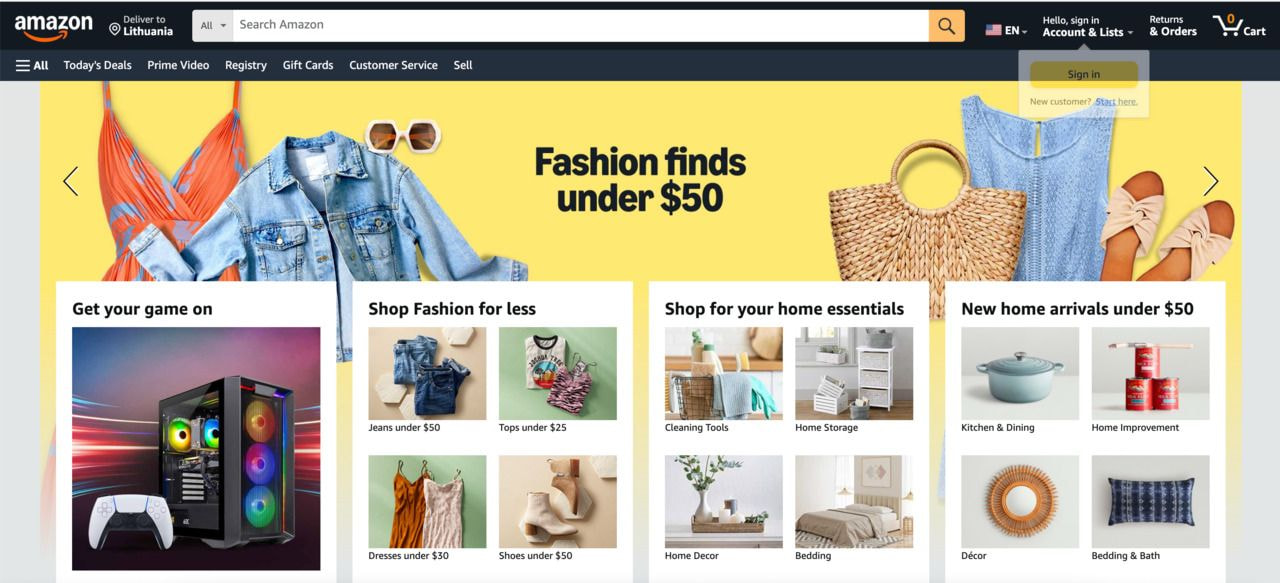
Amazon remains the largest online marketplace globally. It offers access to a massive customer base, making it ideal for sellers who want global reach.
-
Pros: Huge audience, trusted platform, advanced fulfillment options (FBA), and low marketing costs due to high traffic.
-
Cons: High competition, expensive fees, and strict rules on products.
-
Integration with Printful: Easily connect Printful to Amazon for automatic order fulfillment.
-
Fees: Amazon charges $0.99 each time an item sells (for individual sellers) or a flat $39.99/month for professionals, plus a percentage of each sale and additional fees depending on product and category.
-
Best for: Sellers seeking extensive exposure and ready to compete in a highly saturated environment.
Valuable read:
2. eBay
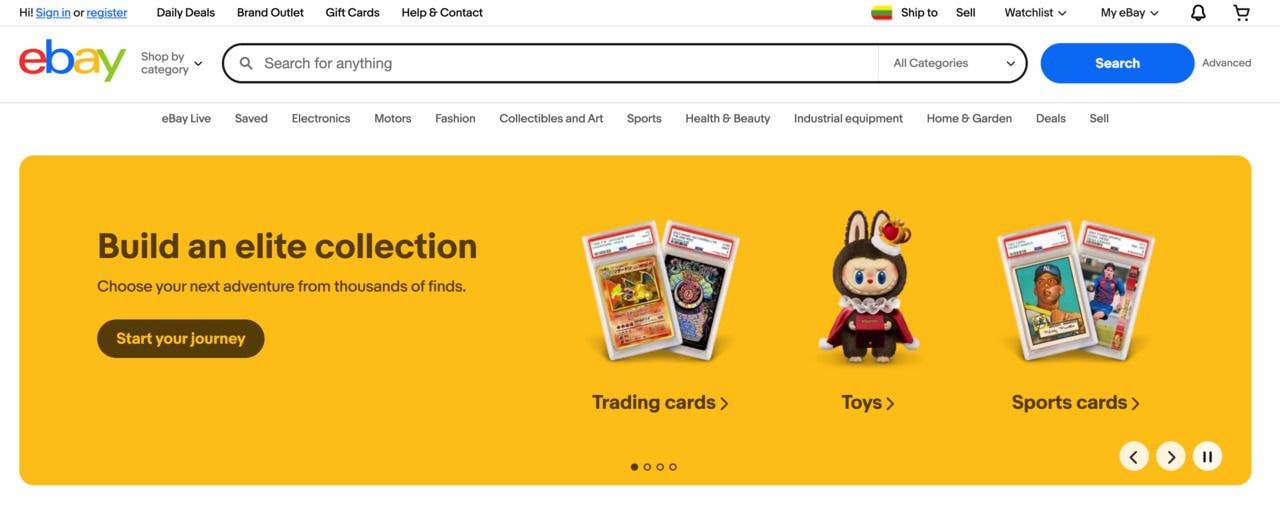
eBay offers both auction-style and fixed-price listings. It's an appealing medium for niche markets and unique products.
-
Pros: Global reach with millions of users, a monthly allocation of free listings (zero insertion fees), and flexible product formats.
-
Cons: Listing fees, high competition, and over-reliance on eBay’s algorithm.
-
Integration with Printful: Sync Printful products to eBay for automatic fulfillment.
-
Fees: Most merchants get a monthly allocation of zero insertion fees; after that, insertion fees can be up to $0.35 per listing. Final value fees vary by category.
-
Best for: Niche markets, antiques and rare goods, and collectibles.
3. Etsy
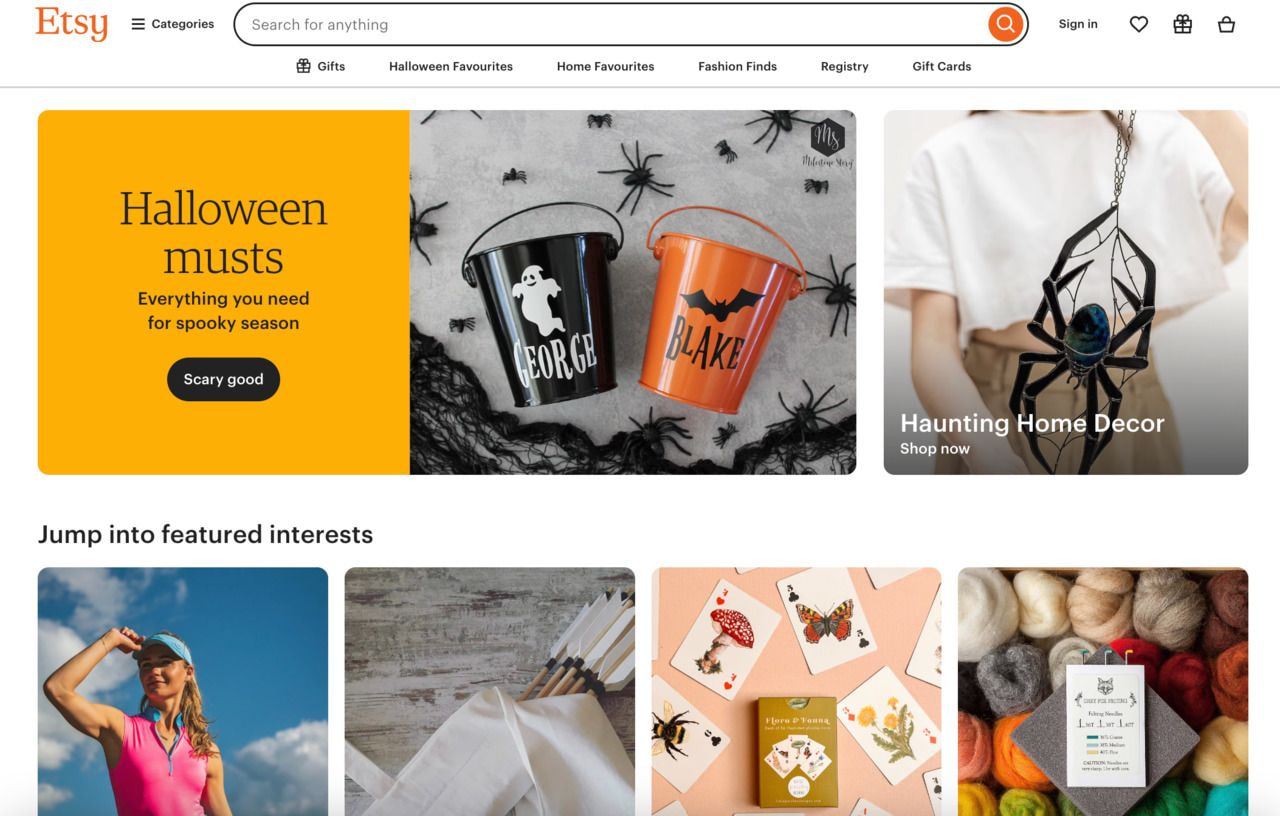
Etsy is the go-to platform for custom and handmade products, perfect for those focusing on crafts and creative merchandise.
-
Pros: Strong community and high demand for creative items.
-
Cons: Competitive, especially in popular product categories, and takes time to gain visibility for new shops.
-
Integration with Printful: Printful integrates easily with Etsy, allowing automatic product syncing and fulfillment.
-
Fees: $0.20 per listing and 6.5% transaction fee (additional Etsy payments/ads fees may apply).
-
Best for: Creators, crafters, and small businesses selling personalized or artistic products.


4. TikTok Shop
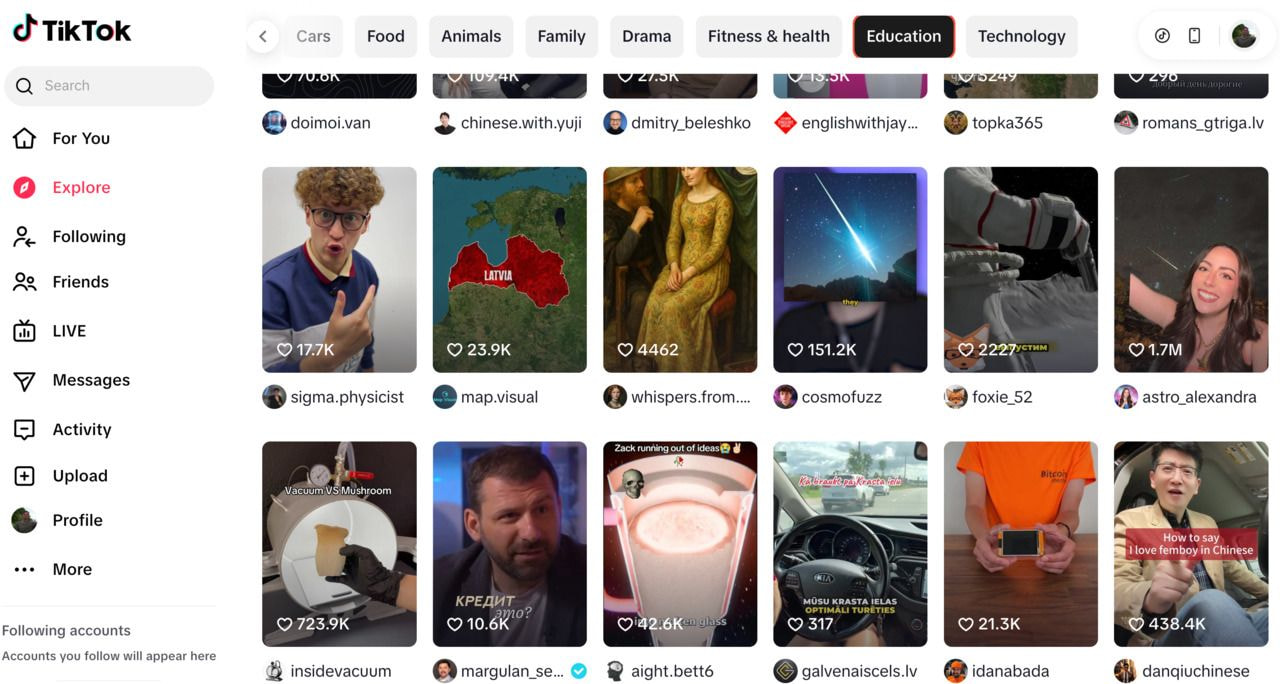
TikTok Shop allows you to sell stuff online directly through the app, tapping into its viral potential. With over a billion active users, TikTok offers unmatched engagement.
-
Pros: A younger, engaged audience, viral marketing potential, and seamless integration with TikTok’s platform.
-
Cons: Attracting buyers requires consistent content creation and engagement, and the eCommerce features are still evolving.
-
Integration with Printful: Printful offers a direct TikTok Shop integration (available for selected countries, including the US).
-
Fees: Referral/commission fees vary by category and region (for example, TikTok Shop US shows a standard 6% referral fee in recent updates).
-
Best for: Trend-driven products and businesses that can leverage TikTok’s viral nature.
5. Depop
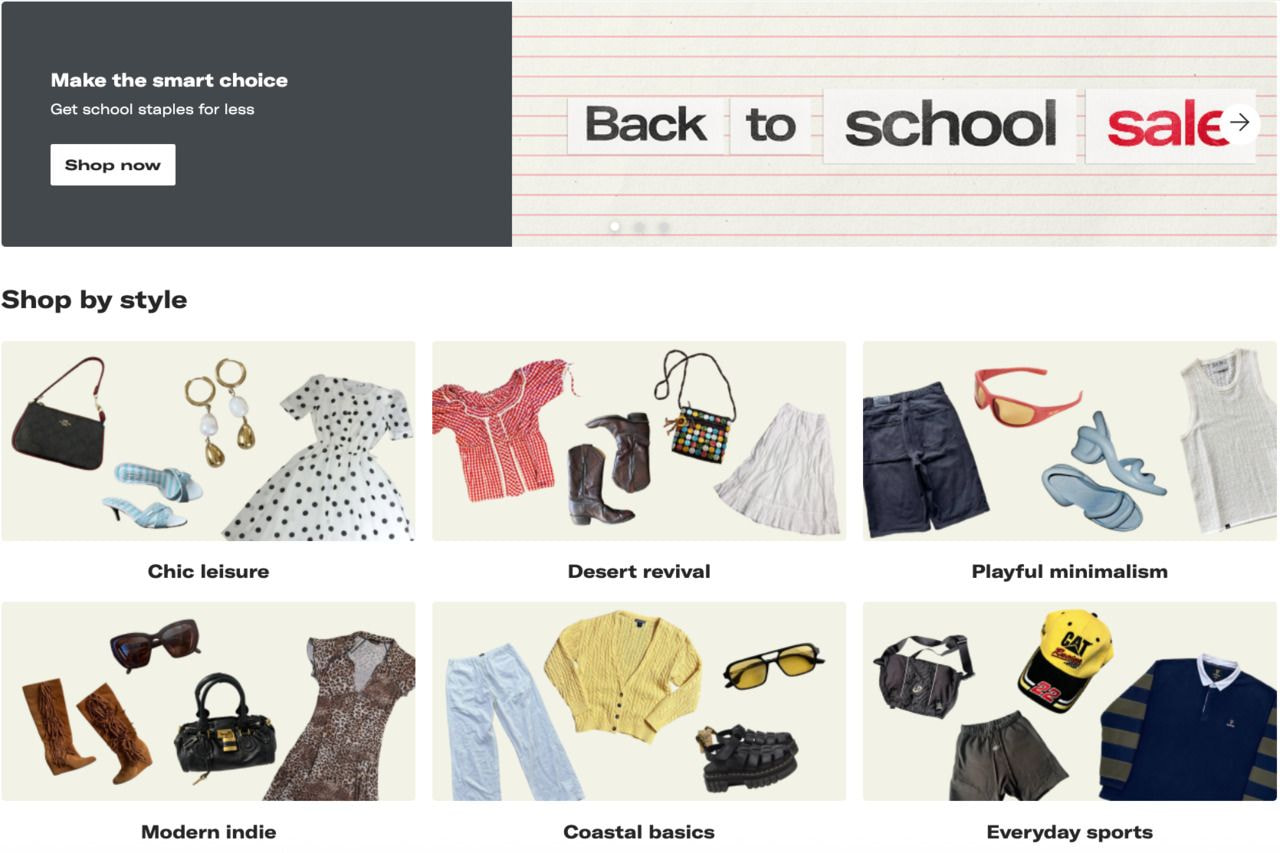
Depop is a mobile-first marketplace focused on fashion and lifestyle items. It’s popular with Gen Z and fashion-forward buyers.
-
Pros: A younger, trend-focused demographic, a mobile-friendly interface, and a strong community.
-
Cons: Limited product categories and requires consistent social media engagement.
-
Integration with Printful: Depop doesn’t integrate directly with Printful.
-
Fees: As of 2025, Depop doesn't charge a selling fee for sellers in the US and UK on new listings (processing fees still apply – currently 3.3% + $0.45 per transaction via Depop Payments in the US).
-
Best for: Selling in the fashion niche, targeting a younger audience.
6. Storenvy
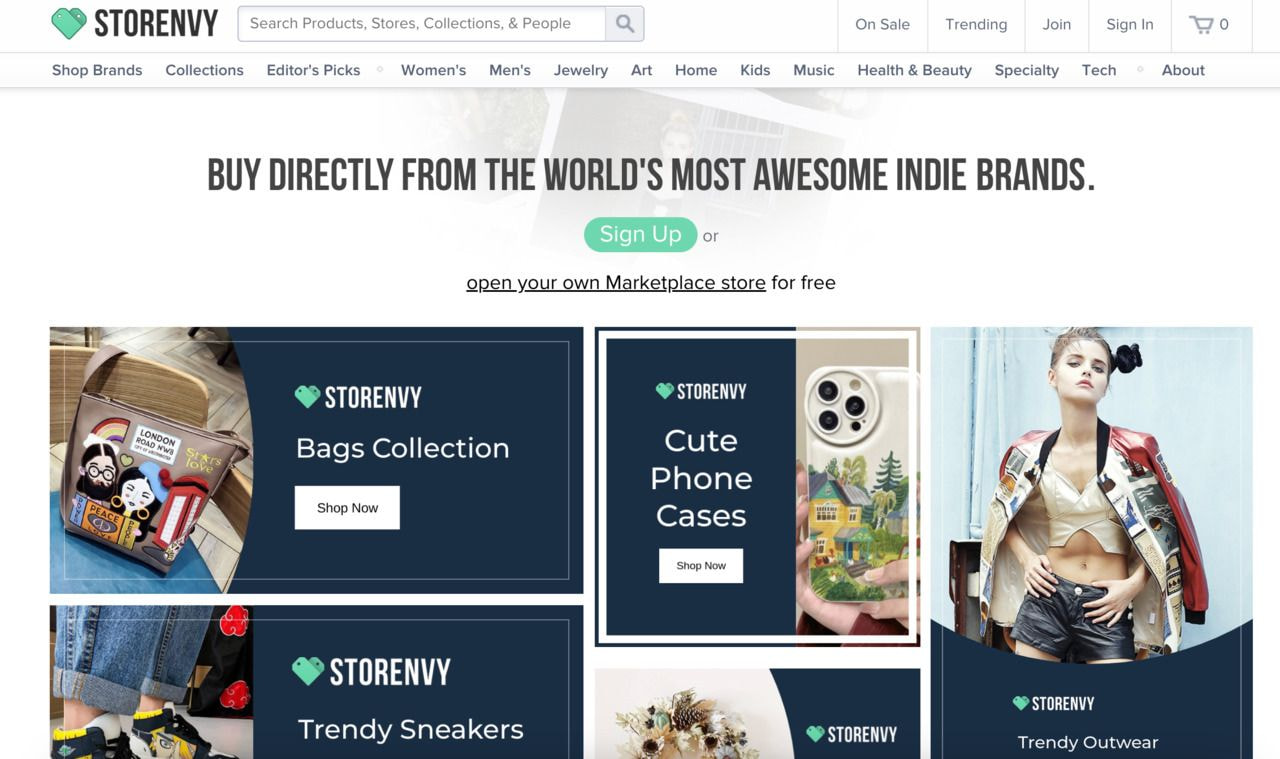
Storenvy is a marketplace for indie brands, offering a more personal shopping experience. It’s a great option for sellers looking to create an authentic brand identity.
-
Pros: Low fees, less competition for niche products, customizable storefronts, and strong community support for indie brands.
-
Cons: Smaller audience than larger platforms, limited advertising and marketing tools.
-
Integration with Printful: Printful integrates with Storenvy for easy product syncing and order fulfillment.
-
Fees: 15% marketplace commission on marketplace orders (separate store subscription options exist).
-
Best for: Indie brands and creators looking for a niche market.


7. Facebook Marketplace
Facebook Marketplace connects sellers to a local audience within Facebook’s network, making it ideal for those looking to test products or focus on local sales.
-
Pros: It's free to list items for local sales and you get access to a large built-in audience; you can reach customers through posts and groups.
-
Cons: For local transactions, there’s no platform checkout – sellers usually handle payment and logistics themselves. Where shipping with checkout is available, Meta has charged selling fees, though some checkout features will no longer be supported after August 2025.
-
Integration with Printful: Facebook Marketplace doesn’t offer direct integration with Printful, so you’ll need to manage fulfillment manually.
-
Best for: Local sellers, side hustlers, or businesses testing products before expanding to larger, more global platforms.
-
Fees: No listing fee for local products; fees may apply where checkout/shipping is supported.
8. Rakuten
Rakuten is Japan's largest marketplace and has a growing international presence. It’s ideal for sellers looking to tap into the Asian market.
-
Pros: Strong customer loyalty programs and access to the Japanese market.
-
Cons: Fees and onboarding can be complex for new/international sellers.
-
Integration with Printful: No native Printful integration.
-
Fees: Monthly fees plus commission (details vary by program and category).
-
Best for: Sellers targeting the Japanese market.


9. Newegg
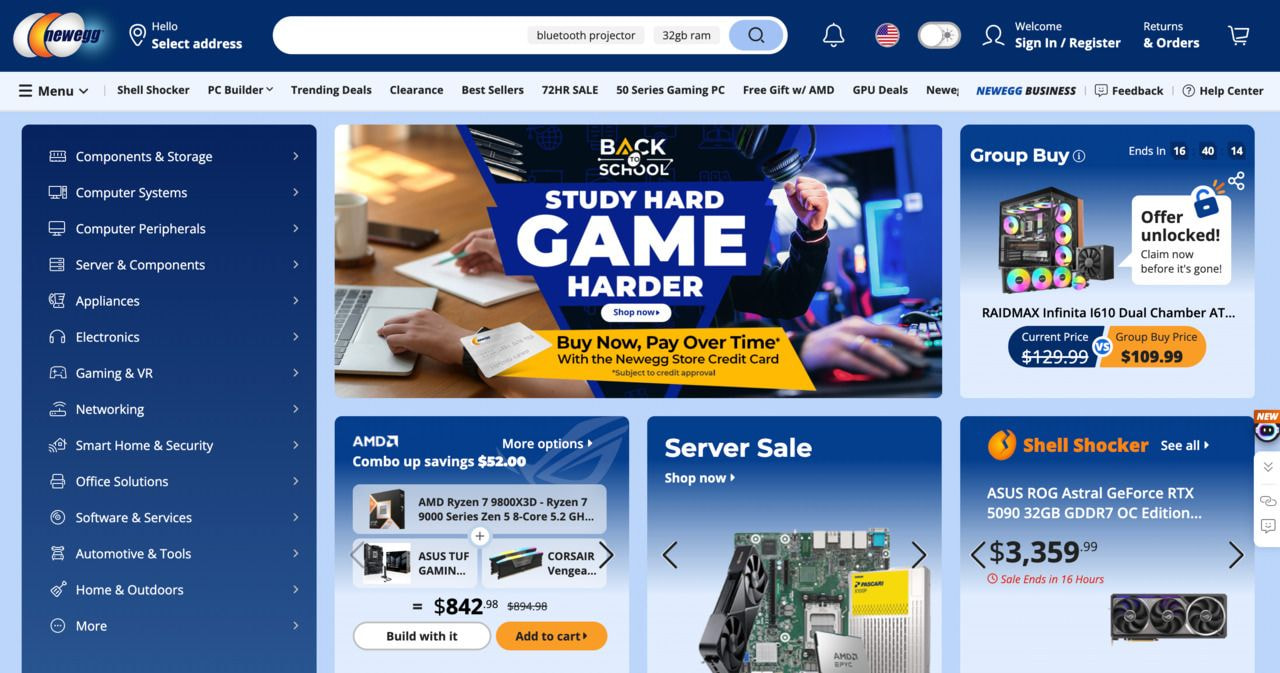
Newegg specializes in electronics and tech accessories. It’s a niche marketplace with a reputation for quality and expertise in the tech space.
-
Pros: Strong tech-focused audience, robust product listings.
-
Cons: Smaller audience compared to platforms like Amazon, and a lengthy approval process.
-
Integration with Printful: No native Printful integration.
-
Fees: Category referral fees are typically 8%-15%.
-
Best for: Tech accessory sellers.
10. Bonanza
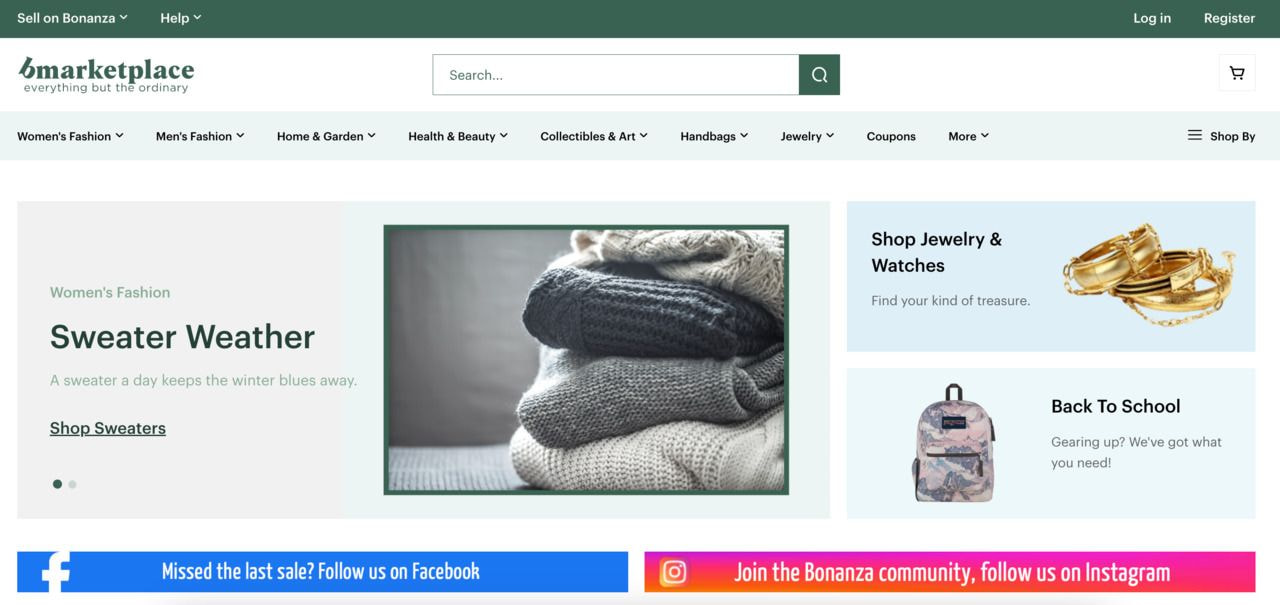
Bonanza is a smaller marketplace with low fees. It offers a simple and seller-friendly experience and a product range that includes clothing, home decor, gardening, and collectibles.
-
Pros: Easy import tools and integration with eBay and Amazon; flexible setup. Low fees, no listing fees.
-
Cons: Smaller audience and less brand recognition.
-
Integration with Printful: There is no native Printful integration with Bonanza.
-
Fees: Final Value Fee starts at 11%, plus a $0.25 transaction fee for non-members. Rates vary by plan and ad options.
-
Best for: Sellers seeking a low-cost platform with flexible scaling options.
11. Poshmark 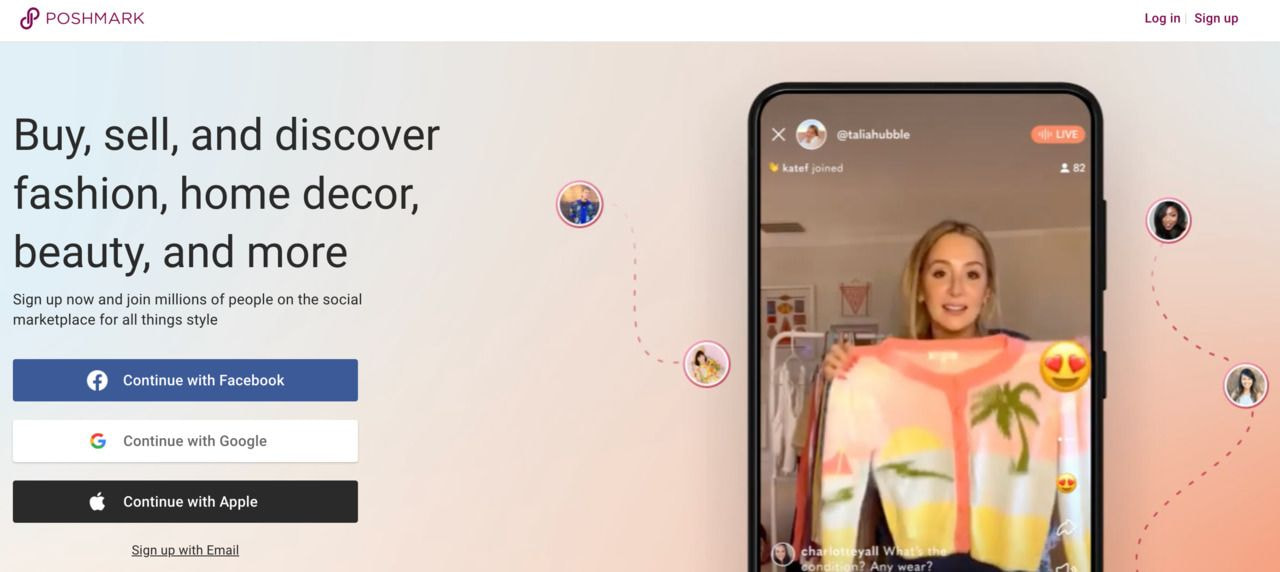
Poshmark is a social commerce platform focused on fashion and home decor. It allows sellers to create their own virtual closet and connect directly with buyers through social features.
-
Pros: Strong community, social selling features, and a mobile-friendly site ideal for fashion brands.
-
Cons: High fees (up to 20% on sales over $15), limited product categories, and no direct integration with Printful. Sellers are responsible for handling fulfillment themselves.
-
Integration with Printful: Poshmark does not integrate with Printful, so you’ll need to manually handle fulfillment when selling through this platform.
-
Best for: Fashion sellers who want to leverage social commerce and connect with a highly engaged community.
-
Fees: $2.95 on sales under $15; 20% on sales of $15 or more.
12. Walmart Marketplace
Walmart Marketplace offers access to millions of US shoppers and is quickly expanding.
-
Pros: Low fees compared to Amazon, a large customer base, and an established reputation.
-
Cons: Strict quality standards and product requirements; complicated setup.
-
Integration with Printful: Printful’s Walmart integration was discontinued in August 2025.
-
Fees: Referral fees are typically 6%-20% depending on category.
-
Best for: Sellers offering affordable, mass-market products to shoppers looking for good deals.
13. Target Plus
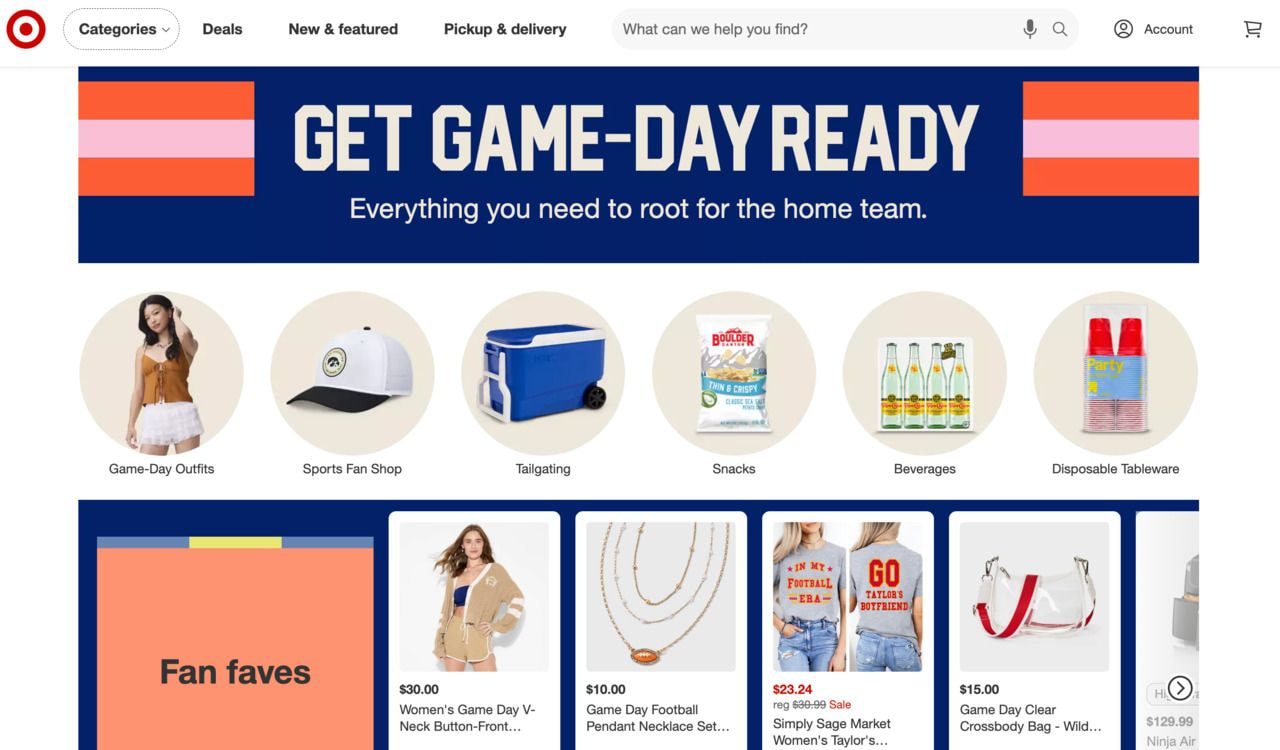
Target Plus is an exclusive, invite-only marketplace. This means you need a special invitation to sell on the platform, but it gives you a direct line to Target's huge community of shoppers.
-
Pros: High-quality traffic and access to a premium customer base.
-
Cons: Invite-only, and more competitive with fewer sellers.
-
Integration with Printful: No native Printful integration.
-
Fees: Varies by product category (not publicly standardized).
-
Best for: Established sellers seeking premium exposure.
14. Gumroad
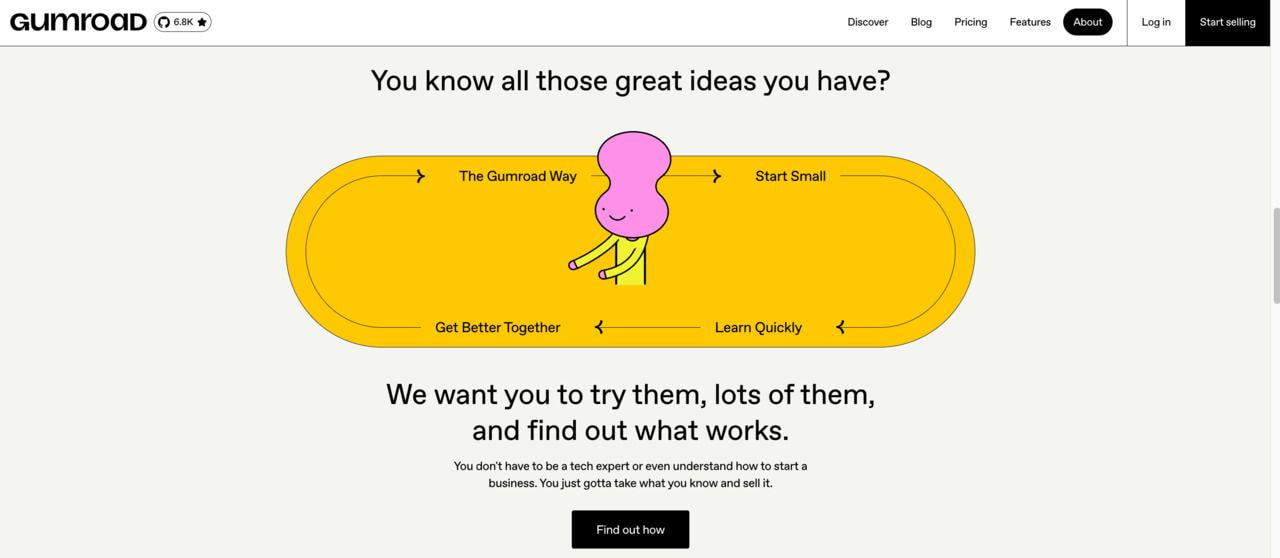
Gumroad is a marketplace designed for creators who want to sell digital products, physical goods, and memberships. It’s known for its simplicity and ease of use, particularly for independent artists, writers, and designers.
-
Pros: Simple setup, low fees, and an intuitive interface. Great for digital products, and you can sell both physical and digital items.
-
Cons: Limited marketplace exposure, as the platform doesn't offer as much traffic as larger platforms like Amazon or Etsy. Also, lacks some advanced customization features.
-
Integration with Printful: Printful offers a Gumroad integration for fulfilling physical product orders placed on your Gumroad store.
-
Best for: Creators who focus on selling digital content or those looking to sell directly to their audience with minimal setup.
-
Fees: 10% + $0.50 per sale for direct/profile sales; 30% for sales via Gumroad Discover.
2025 Global marketplace overview
Here’s a look at what’s coming and the key trends in eCommerce in 2025:
Global GMV growth
By 2025, global Gross Merchandise Value (GMV) on leading eCommerce platforms and marketplaces is expected to reach $3.9 trillion, fueled by social commerce, AI, and mobile-first shopping.
Social commerce
Platforms like TikTok Shop are gaining ground, and by 2025, social commerce is expected to represent 17% of global online sales. This makes platforms that allow selling directly through social media more important than ever for reaching consumers looking for trendy products on the go.
Mobile-first
75% of eCommerce sales now occur on mobile devices. Mobile-optimized storefronts are a no-brainer, and marketplaces focus on capturing the attention of today’s buyers and making it easy for consumers to shop on their phones.
AI in marketplaces
Artificial intelligence is playing a bigger role than ever in making shopping easier. It’s helping marketplaces improve customer experiences, manage inventory, and give shoppers personalized product recommendations, making it easier to find exactly what they’re looking for.
How to create an online shop with Printful and connect it to a marketplace
Printful offers an efficient solution to streamline the marketplace operations. Here’s how you can start selling your print-on-demand products:
Create a Printful account:
First, sign up for a Printful account if you don’t already have one. Printful is free to join and offers a user-friendly platform to design and sell your products.
Choose your marketplace:
Decide where you want to sell. Platforms like Etsy, Amazon, eBay, and TikTok Shop are great options for POD sellers. Consider your product type and audience. For example, Etsy is ideal for creative and personalized items, while Amazon is perfect for reaching a massive, global customer base.
Set up your store:
Once you’ve selected a marketplace, follow the platform’s guidelines to set up your account and storefront. Printful allows you to integrate seamlessly with most major marketplaces like Etsy and Amazon, meaning you can manage everything in one place.
Connect Printful to your marketplace:
-
For Etsy, go to the Printful Dashboard and select Etsy from the integrations list. Click Connect to Etsy and follow the prompts to link your store.
-
For Amazon, connect your Printful store to Amazon Seller Central via the Printful dashboard to sync products and automatically handle orders.
Create your designs:
Use Printful's Design Maker to create custom products that reflect your brand, such as apparel, mugs, and posters. Once your designs are ready, upload them to your connected marketplace.
Sync products:
Once your products are created, sync them to your marketplace store. Printful will handle the printing and shipping whenever an order is placed, allowing you to focus on marketing and growing your company.
Promote your store:
Start promoting your online store using social media, email marketing, and influencer partnerships to drive traffic and boost sales – a key factor for long-term success.
As your brand grows, you’ll gain valuable insights into your customers’ preferences and can optimize your product offerings.
Choosing the right marketplace
When selecting a marketplace for your POD business, consider your product type, target audience, and business goals. Here are some tips to help you make the right choice:
-
For custom or artistic products: Platforms like Etsy or TikTok Shop are great options because they focus on creative and personalized products.
-
For tech accessories: Consider Newegg or Amazon, as they cater to tech enthusiasts.
-
For fashion: Depop and eBay offer strong fashion communities that align with POD merchants in this niche.
Conclusion
With the right marketplace, you can rapidly scale your POD business in 2025. Whether you choose Amazon for its massive customer base, Etsy for its creative community, or TikTok Shop for its viral potential, there’s a site for every seller. By leveraging Printful’s seamless integrations, you can manage your store and automate fulfillment, which are key toward your entrepreneurial success.
Start exploring these marketplaces today and choose the one that best fits your product, audience, and growth strategy.


FAQ: Frequently asked questions
Amazon is one of the most popular marketplaces globally. While the company doesn’t publish official monthly visit figures, third-party sources such as Statista provide estimates. For official data on Amazon’s scale, see its net sales and other disclosures in investor reports.
Rankings depend on methodology and aren’t determined by a single primary source. As a primary-source data point, Amazon reported $574.8 billion in net sales in 2023 and $638 billion in 2024.
Amazon is the largest online marketplace in the US, dominating both traffic and sales, with billions of visits each month.
Amazon’s massive audience, wide product selection, and fulfillment options make it the go-to marketplace for a variety of sellers, from small businesses to established brands.
All marketplaces charge some sort of fee. They vary widely by category and program:
-
TikTok Shop US lists a standard 6% referral fee in recent updates.
-
Etsy charges a 6.5% transaction fee + $0.20 listing fee (plus other applicable fees).
-
Gumroad charges 10% + $0.50 per sale (and 30% via Discover).
-
Bonanza has a minimum 11% Final Value Fee plus a $0.25 transaction fee for non-members.
The minimum fee depends on your product categories, so it's wise to calculate all potential costs to see how much money you'll make from each sale.
Service fees are the charges marketplaces impose for using their platform. These can include:
-
Listing fees: A small fee to list your products.
-
Commission/referral fees: A percentage of each sale.
-
Payment processing fees: A fee for handling transactions.
-
Subscription/membership fees: A recurring fee for using advanced platform features.
Deciding on the best site depends on your product type, audience, and goals. Here’s a quick overview:
-
Amazon: Best for various products and reaching a massive, general audience. High competition and strict rules apply.
-
Etsy: Ideal for handmade, custom, or creative items, with a community that values uniqueness.
-
eBay: Works well for resale, collectibles, and limited-stock items, with flexible pricing options.
-
Walmart Marketplace: Suited for competitively priced products targeting a large, price-conscious audience.
-
TikTok Shop: Great for trend-driven, impulse-purchase items and social commerce audiences.
-
Depop: Popular for fashion, vintage, and niche clothing, especially among younger shoppers.
-
Gumroad: Best for digital products, downloads, or small-scale creative offerings.
-
Poshmark: Focused on fashion and accessories, including resale, with a community-driven marketplace feel.
-
Storenvy: Ideal for small brands looking for niche audiences and independent selling options.
-
Facebook Marketplace: Works for local, peer-to-peer sales; no direct integrations for automated fulfillment.
This depends on how you measure it – traffic, revenue, or global reach. By revenue, Amazon is the leading online store in the world. It’s also the most visited marketplace in the US, making it the top choice for sellers aiming for massive exposure.
Other platforms may lead in specific niches:
-
Etsy for handmade and custom goods.
-
eBay for resale and collectibles.
-
TikTok Shop for trend-driven social commerce products.

Published author, scholar, and musician, Andris draws on over 11 years of experience in and outside academia to make complex topics accessible – from SEO and website building to AI and monetizing art. Devoted to his family and self-confessed introvert, he loves creating things, playing musical instruments, and walking around forests.





